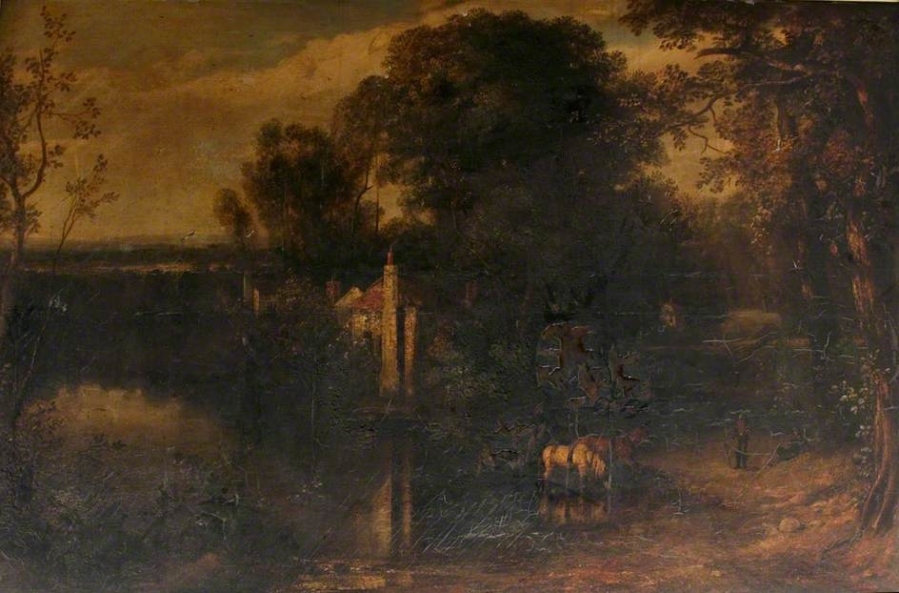
The portrait on the left is that of Mrs Sophia Musters, painted by George Romney and the one to the right is Mary, Countess Howe, by Thomas Gainsborough.
Both painting are located at Kenwood House and initially I didn’t realise there was any other connection, apart from that they were simply two stunning portraits of 18th century women. It was when I began to explore the life of Sophia, that her connection to Mary came into view.
Sophia Catherine nee Heywood was one of the daughters of the affluent James Modyford Heywood and his wife Catherine, nee Hartopp. The couple lived at Maristow House in the parish of Bickleigh, set in landscaped parkland, on the River Tavy to the north of Plymouth. In addition to this, James also had a plantation named Heywood, in the parish of St Mary, Jamaica.

James and Catherine had 4 daughters:
Frances, who married Thomas Orby Hunter on 26 Sept 1796 at the parish church of Tamerton Foliot, Devon.
Maria Henrietta, who married a Lewis Montolieu on 4 March 1786 at St George’s, Hanover Square in the presence of her father, her sister, Frances and John Musters.
Emma who married the controversial Admiral Sir Albemarle Bertie on 15 July 1782 also at Tamerton Foliot.
Finally, the woman in question, Sophia, who married Sir John Musters on 23 July 1776, again, their marriage took place at the parish church of Tamerton Foliot in Devon.
John Musters was a Nottinghamshire politician, land owner and the High Sherriff of Nottingham and just prior to the couple’s marriage John had the old Colwick Hall demolished and a new one built in its place ready for his new bride.

Once settled into their new home, Colwick Hall, they wasted no time starting a family, with Sophia giving birth to their first child, a son, John, born on 6 May 1777, followed by two daughters, sadly though, only one of whom survived into adulthood, Sophia Ann, who baptised on 21 Jun 1778. Their second daughter, Frances Catherine was baptised on 31 Jul 1779 but she sadly died shortly after.
Not long after this, all was not well in paradise, although to the outside world it certainly appeared to be. Sophia soon learnt that John preferred to spend his time with his horses and country pursuits rather than with his beautiful wife and young family.
The diarist, Fanny Burney described Sophia as ‘most beautiful, but most unhappy’. Sophia, it transpired, was much livelier and fun loving than her seemingly dull and disinterested husband.
Men were captivated by Sophia and being bored with her husband she soon found herself attracted to other men and was reputed to have had affairs with the likes of Peniston Lamb and George Pitt.

It’s curious however, that when Lamb died in 1805 that he left his bay horse to his ‘good friend, John Musters’ along with a further bequest to Sophia. It can only be assumed that Peniston and John Musters found a way to move on from Sophia’s affair and the two men remained friends. John was said to have been furious when he discovered his wife’s infidelity and had her removed from their joint portrait and this has only recently been discovered and restored to the image above that you now see.
Sophia died in 1819 at the age of 61, the couple having patched up their differences and settled down to some sort of marital harmony. In her memory John had this tomb sculpture of a woman weeping.

In 1796, Sophia’s father James Modyford died, and it was whilst checking his will, that Mary, Countess Howe (nee Hartopp) came into view. Mary was James’ sister in law and whilst she wasn’t named in his will, her husband Richard, 4th Viscount Howe was. James also sold his plantation in Jamaica, along with property, cattle and enslaved people to Donald Campbell for £18,000, payable in instalments.

How interesting that the two portraits now share the same location, Kenwood House, but to finish, here we have Mrs Sophia Musters as Hebe, again at Kenwood House.

Sources
Devon Family History Society
Featured Image:
Colwick Hall











































































